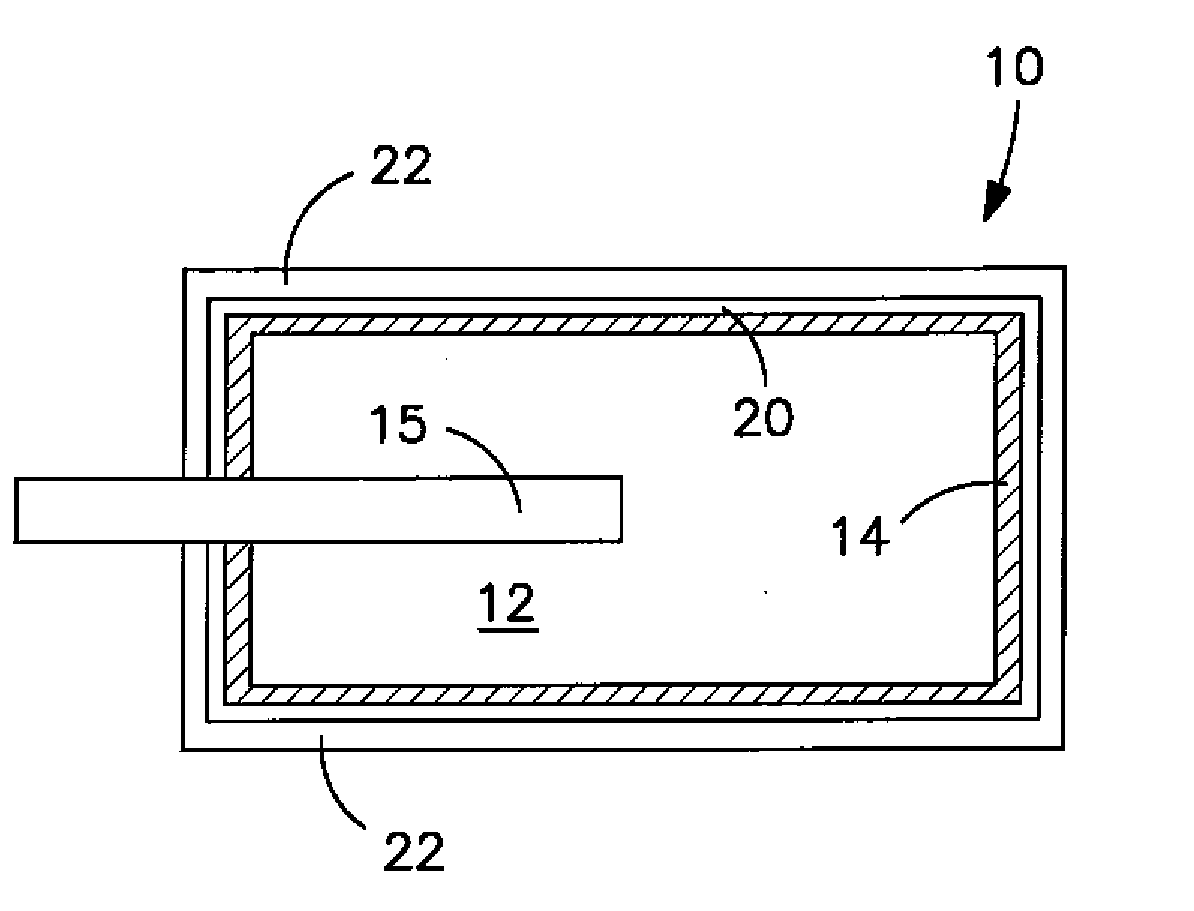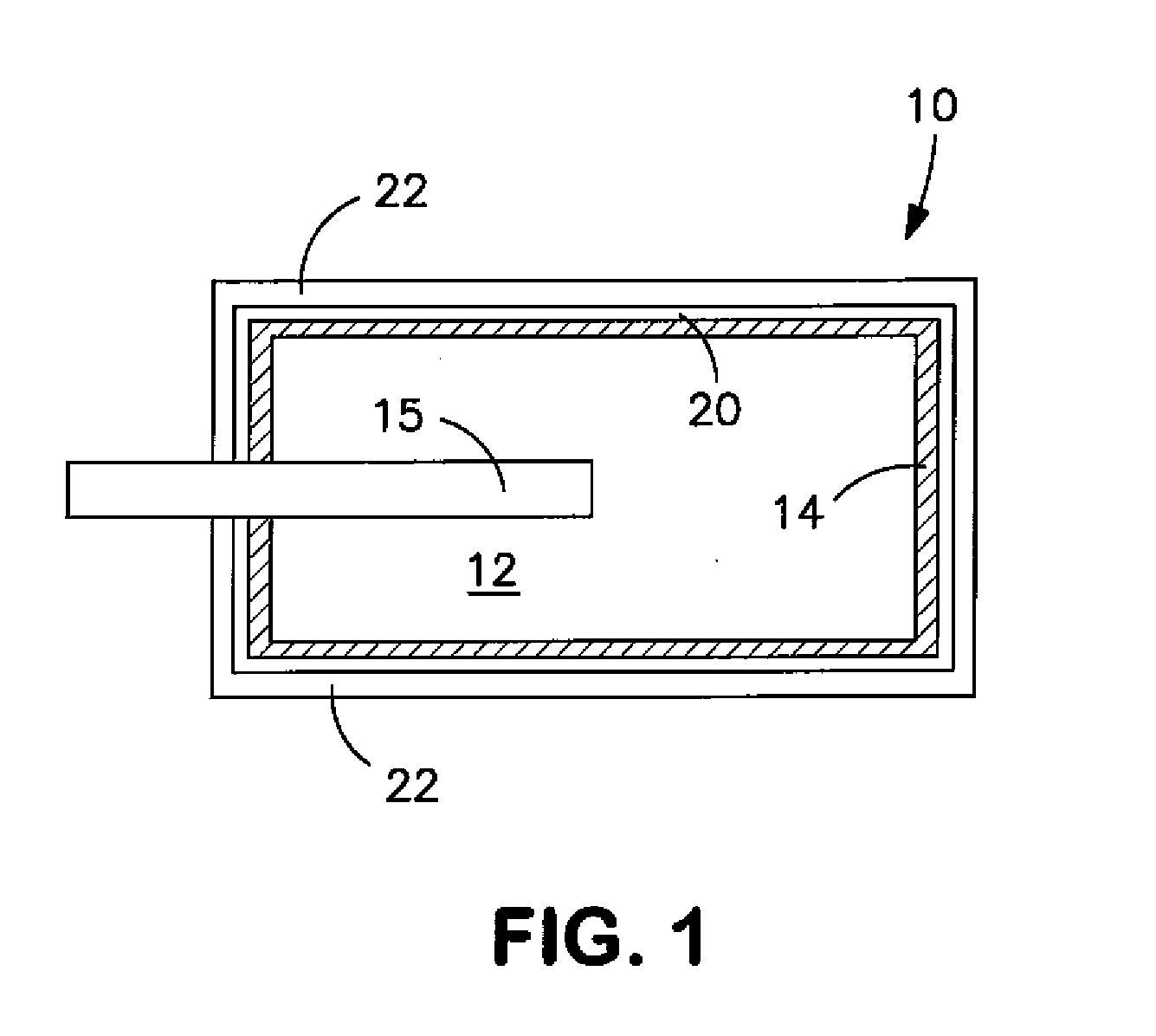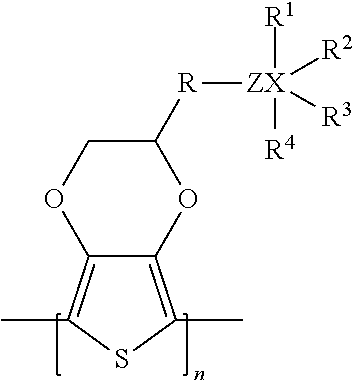Solid Electrolytic Capacitor Containing a Poly(3,4-Ethylenedioxythiophene) Quaternary Onium Salt
- Summary
- Abstract
- Description
- Claims
- Application Information
AI Technical Summary
Benefits of technology
Problems solved by technology
Method used
Image
Examples
example 1
[0059]The ability to form poly[3-(2,3-dihydrothieno[3,4-b][1,4]dioxin-2-ylmethoxy)-propane-1-ammonium sulfonate] (“PEDOTSNH4”), which has the structure below, was demonstrated:
[0060]Poly[3-(2,3-dihydrothieno[3,4-b][1,4]dioxin-2-ylmethoxy)-propane-1-ammonium sulfonate] (“PEDOTSNH4”) was formed by initially mixing 2 grams of PEDOTSNa with 20 milliliters of water and 1.25 grams of HCl (35%). The mixture was stirred for 24 hours. The product was then filtered and washed with 10 milliliters of water. The obtained paste was mixed with 120 milliliters of water and 80 milliliters of ammonia water (25%). The mixture was stirred at ambient temperature for 6 days. Reaction was monitored by UV / VIS measurements. Salt impurities were removed by nanofiltration. The obtained polymer mixture was diluted to a polymer concentration of 1 wt. %.
example 2
[0061]Poly[3-(2,3-dihydrothieno[3,4-b][1,4]dioxin-2-ylmethoxy)-propane-1-ammonium sulfonate] (“PEDOTSNH4”) was formed by initially mixing 2 grams of PEDOTSNa with 20 milliliters of water and 1.25 grams of HCl (35%). The mixture was stirred for 24 hours. The product was then filtered and washed with 10 milliliters of water. The obtained paste was mixed with 120 milliliters of water and 80 milliliters of ammonia water (25%). The mixture was stirred at ambient temperature for 6 days. Reaction was monitored by UV / VIS measurements. Salt impurities were removed by nanofiltration. The obtained polymer mixture was diluted to a polymer concentration of 1 wt. %.
example 3
[0062]The ability to form poly[3-(2,3-dihydrothieno[3,4-b][1,4]dioxin-2-ylmethoxy)-propane-1-tetramethylammonium sulfonate] (“PEDOTSMe4N”), which has the structure below, was demonstrated:
[0063]The polymer was formed as follows. Initially, 2 grams of PEDOTSNa, 140 milliliters of water, 2.15 grams of tetramethylammonium bromide, and 10 grams of isopropyl alcohol were mixed at ambient temperature for 3 days. The temperature was then increased to 55° C. and the solution was mixed for 24 hours. Thereafter, the solution was cooled to the room temperature. Salt impurities were removed by nanofiltration. The obtained polymer mixture was diluted to a polymer concentration of 1 wt. %. The ratio of water and alcohols (methanol, ethanol and isopropyl alcohol) was adjusted according to final use with the amount of water being at least greater than 50 wt. %.
PUM
 Login to View More
Login to View More Abstract
Description
Claims
Application Information
 Login to View More
Login to View More - R&D
- Intellectual Property
- Life Sciences
- Materials
- Tech Scout
- Unparalleled Data Quality
- Higher Quality Content
- 60% Fewer Hallucinations
Browse by: Latest US Patents, China's latest patents, Technical Efficacy Thesaurus, Application Domain, Technology Topic, Popular Technical Reports.
© 2025 PatSnap. All rights reserved.Legal|Privacy policy|Modern Slavery Act Transparency Statement|Sitemap|About US| Contact US: help@patsnap.com



